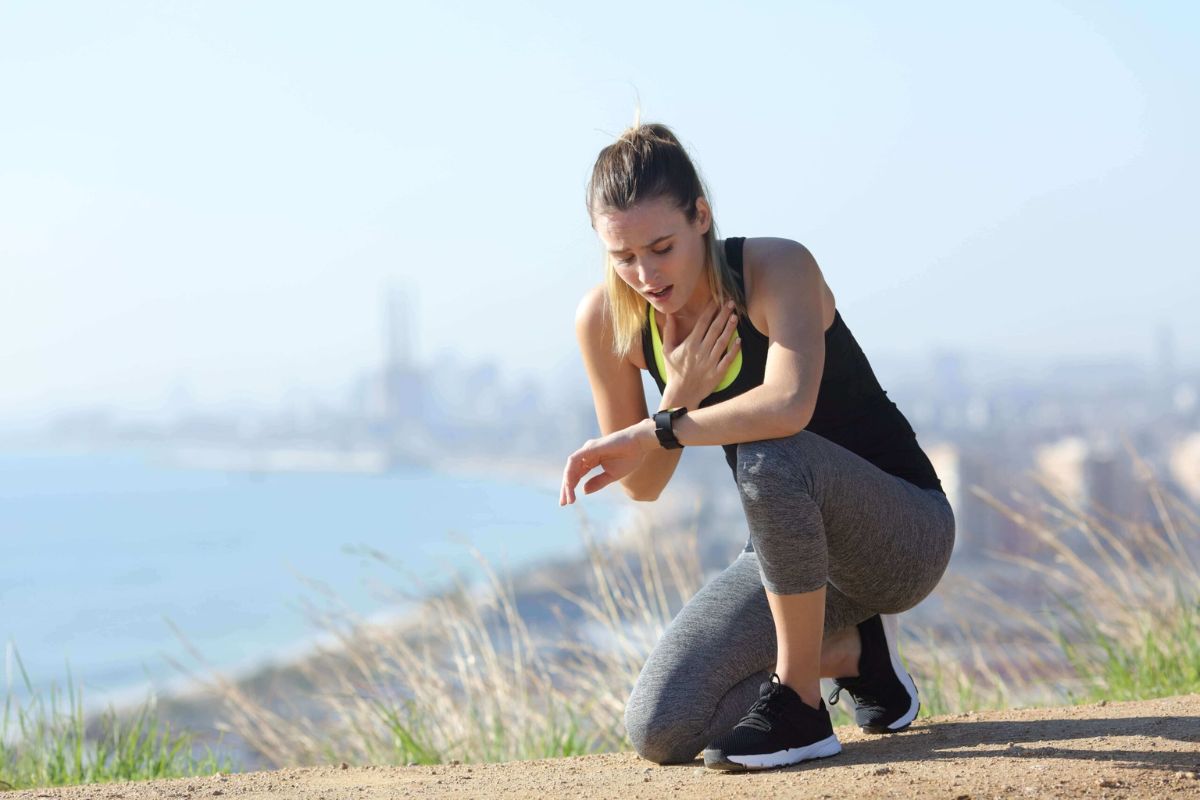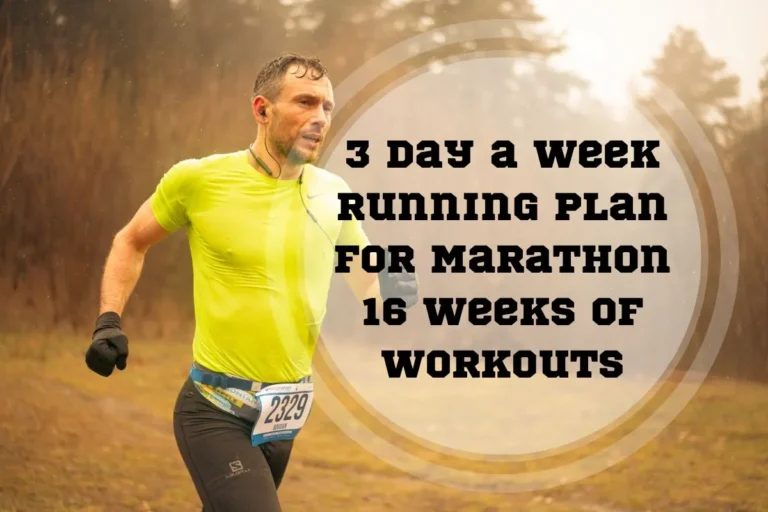Lungs Burning after Running? Learn 9 Expert Solutions
If you have your lungs burning after running, it can be quite a nasty experience. Many runners suffer from exercise-induced lung pain as they push their bodies beyond limits. Have you been feeling the same burn and searching for ways to alleviate it? Don’t worry, we have the solution! In this blog post, we’re covering top 9 tips and solutions on how to ease your lungs when running so you can avoid that annoying pain again.
Why Does My Chest Burn When I Run?
Lungs burning after running can be caused by environmental factors, respiratory infections, allergies, acid reflux, and exercise-induced asthma. If it burns to breathe, you can try warming up properly, covering your face, and gradually increasing intensity levels along with taking slow deep breaths through nose rather than mouth breathing.
Why Do My Lungs Burn When I Run?
It is not unusual for runners to experience burning lungs when running. This discomfort can range from mild to severe, depending on the causes and other factors, such as cold temperature or altitude. It typically occurs during intense physical activity when airways become irritated by higher-than-normal levels of oxygen intake encountered while running.
After a hard running session, some runners may experience chest pain and uncomfortable burning in their lungs. This can occur one to two days after exercise due to delayed onset of muscle soreness from lactic acid build up or exercise-induced bronchoconstriction (EIB).
EIB can cause an intense burning sensation and difficulty in breathing during or after physical activity. It is more likely if the runner breathes deeply through the mouth instead of nose, runs through cold weather, or has respiratory allergies.
The condition when lungs hurt when running can also happen due to various reasons:

1. Cold and Dry Air
Cold air is often dry, which can be problematic for people running in cold weather. Dry air can irritate the lungs and windpipe, leading to increased respiration rate, coughing, wheezing, and a burning sensation. Additionally, irritation of nose hairs near the nasal cavity further contributes to this discomfort.
2. Mouth Breathing
When running, we tend to breathe through our mouth, which dries out easily due to air being inhaled from outside without the help of moisture-filled nostrils.
This dryness and dehydration can lead to an irritation in the throat and lungs, causing pain or discomfort when combined with rapid deep breaths, which is quite common when running.
3. Acid Reflux
When the lower esophageal sphincter does not close completely, it can cause gastric acids to back up into your throat, creating a painful burning sensation in the lungs. This is known as gastroesophageal reflux disease (GERD).
Exercise-induced GERD can be triggered by activities that increase abdominal pressure, such as running, sprinting, cycling, gymnastics, and weight lifting. These problems are normal, but intense exercises need special care since they make this condition worse.
4. Asthma
For runners, exercise-induced asthma can be a common problem. Symptoms include shortness of breath, wheezing, coughing, and bronchospasm (airway narrowing). They are caused when the airways inside the lungs narrow or squeeze during vigorous or prolonged exercise.
Cold weather is particularly problematic because it can cause additional breathing problems for those with asthma. In fact, cold and dry air is one of the most common triggers for exercise-induced asthma symptoms, others include mouth breathing and acid reflux.
5. Respiratory Infection
Respiratory infections, such as bronchitis, pneumonia, and lung infections, can cause a burning sensation in the lungs while running. Symptoms of these illnesses include coughing, wheezing, chest pain or tightness, shortness of breath, and difficulty breathing.
Individuals with underlying respiratory diseases, like asthma and chronic obstructive pulmonary disease (COPD), usually experience exacerbation of their symptoms due to regular exercise.
What to Do if the Lungs Burn after Running?
Taking some form of rest or relaxation can be beneficial in alleviating burning lungs, as well as consuming warm drinks to soothe your throat and chest. Let’s discuss the details:
Rest and Relaxation Techniques
Deep breathing exercises can be used to draw oxygen-rich air deep into the lungs, allow them to expand fully and release toxins. Additionally, meditation and mindfulness practices such as yoga or tai chi can help control respiratory rate during exercise.
Stretching is also great for promoting blood flow throughout the body, which can ease pain symptoms.

Pro Tip:
Finally, warm baths with Epsom salts have been shown to reduce inflammation when applied directly to the chest or neck area where lung burn may be felt most intensely.
Warm Drinks
Drinking warm drinks before, during, or after running can help alleviate uncomfortable lung pain and burning sensations. Such beverages soothe the dryness in airways that may contribute to discomfort while exercising. They also relieve symptoms of acid reflux or GERD, which often cause burning sensations in lungs while running.
Warmed beverages also provide hydration to prevent heat-related illnesses and aid recovery after exercise.
How to Treat Chest and Lung Pain after Running
Here are the main treatment options that help to reduce chest and lung pain after running:

1. Rest and Recovery
Rest and recovery are an essential part of any runner’s routine to help alleviate chest and lung pain from running. During a workout, our bodies experience stress, which can lead to inflammation in the lungs as well as other areas.
When the body is given time to rest after exercise, it helps reduce this inflammation, thus relieving pain or discomfort in the chest and lungs. Generally speaking, runners should rest for at least one day every week, but individual physiology will determine how much is necessary.
2. Medications for Asthma or Allergies
The first line of treatment for asthma or allergies is often an inhaler containing a short-acting beta-2 agonist, such as albuterol. These medications provide quick relief from airway constriction that can result in chest pain during exercise.
Some people may need to use an inhaler before and/or after running to manage symptoms. Inhaled corticosteroids are also prescribed by doctors when long-term relief is needed. They help reduce the inflammation of the bronchial passages resulting from both exercise and allergy attacks.

Pro Tip:
Additionally, natural remedies like garlic and ginger have anti-inflammatory properties which can ease lung discomfort caused by asthma or other respiratory disorders associated with chest burning after running.
3. Physical Therapy
Physical therapy can help not only alleviate the symptoms caused by the pain but also improve overall lung function. Techniques like clapping, vibration, postural drainage, and inhaling of vapors are used in chest physical therapy to clear the lungs and reduce breathing difficulties.
In addition, if your lungs feel hot, breathing exercises can help manage respiratory infections and increase elderly runners’ lung function.
Subscribe to Our Running Newsletter!
Get free running tips from renowned professional athletes and discounts from top-notch brands.
When to See a Doctor for Chest and Lung Pain while Running?
If you experience any chest pressure or pain during exercise such as running, it is important to visit a doctor. Chest pain can have many different causes, and some of them may be serious, so it’s essential to discuss new, unidentified, or worsening chest pain with your healthcare provider.
Common causes of exertional chest pains in recreational runners and athletes include a spasm of the lungs’ small airways, asthma or allergies, GERD, PAH (Pulmonary Arterial Hypertension), heart problems, and vocal cord dysfunction.
What to Do When Chest Pain Persists after Running?
Chest pain after running can sometimes be more serious than just muscular soreness. If the chest pain persists or worsens with exercise, it may be a sign of an underlying medical condition that needs to be addressed by a doctor.
Medical evaluation is important for identifying any potential heart-related issues that could cause chest discomfort during exercise. It’s also essential to rule out cardiac and heart attack symptoms along with digestive-related causes like gastroesophageal reflux (GERD) or muscle spasms triggered by acid reflux.
Prevention of Chest Pain During or after Running
To prevent chest pain during or after running, it is important to follow some simple rules:
1. Breathe Through Your Nose
If you’ve ever had lungs feel on fire when running, you know it can be an uncomfortable experience. While there are many things that can cause this sensation, one of the best solutions is simply to breathe through your nose.
Nasal breathing is particularly important during exercise because it helps warm the air before it goes into your lungs and responds to increased oxygen demands from physical activity.
Additionally, nasal breathing stimulates receptors that help regulate blood flow and contributes to efficient lung function, which increases the amount of oxygen uptake while running or exercising.
2. Warm up Properly
Proper warm-up before running is an essential factor for runners to reduce the risk of injuries. It helps prevent muscle strains and chest pain during and after exercise. Good warm-up routines consist of light cardiovascular activities like jogging and slow sustained stretches that will increase flexibility in key muscles.

This drop in intensity should be followed by dynamic stretching to activate muscles used while running and prepare them for exercise.
3. Stay Hydrated
Staying hydrated is key to ensuring that your body can cope with the stress and strain of running. It’s important to drink enough fluids before, during, and after exercise in order to maintain hydration and keep the lungs healthy.
When you run in cold or dry air conditions, it’s more important than ever to ensure adequate fluid intake. Dehydration can worsen medical symptoms such as chest pain while running or during exercise-induced asthma attacks.

4. Ease Your Pace
Slowing down your running pace is an effective way to prevent chest burning after running. By gradually increasing the amount of time you run, it gives your lungs and muscles time to adapt, so there’s less strain.
It increases circulation and oxygen consumption in a safe and controlled manner. Besides, it allows enough time for rhythmic breathing at regular intervals, which can help increase overall lung capacity.

Frequently Asked Questions about Chest Burning after Running
How to Stop Burning Lungs after Running?
If you are experiencing burning lungs after running, first and foremost make sure to take sufficient rest. The best way to soothe burning lungs is by finding ways to relax in between runs while breathing through your nose.
Is It Normal for the Lungs to Burn After Running?
Yes, sometimes it is normal for the lungs to burn after running. This sensation occurs due to a number of factors, including cold and dry air, incorrect breathing techniques during exercises, such as mouth-breathing, and EIB.
Can COVID Cause Chest Pain when Running?
Considered one of the many long-term symptoms that indicate a person still has remnants of the virus in their system, chest pain can be caused by COVID-19. As a respiratory virus, it often exacerbates underlying heart conditions or other breathing issues and affects people with compromised immune systems.
Why Do My Lungs Burn After Exercise?
This sensation most typically occurs when running in cold or dry air, though other factors can also cause your lungs to hurt during exercise. Additionally, certain conditions such as acid reflux, asthma, or coughing due to a respiratory infection may heighten chest discomfort while exercising.
Final Thoughts on Chest Burning after Running
It is important to pay attention to any chest burning after running, as it could be a sign of an underlying issue. Since the lungs are affected by the air quality, air pollution and altitude changes can play a role in chest burning during or after physical activities.
You should consult your doctor about respiratory infections, allergies, and asthma or heart issues if you experience regular chest burning at different points in your run. Keeping your lungs healthy for optimal performance can start with typical things like quitting smoking, adequate hydration and taking regular breaks while out on a run. Stay healthy and run safely!
Have you ever experienced a sore throat and lungs burn after running? Please share your experience in the comments below.
Also Read:
- How Do Runners Prevent Cramps
- Why Do My Ankles Hurt When I Run
- Is It Better To Do Yoga Before Or After Running
- Best Running Shoes For Forefoot Strikers
- Best Running Shoes For Overweight Women
- Does Running Tone Your Body
- Will Running 20 Minutes a Day Enough
- Best Running Parachute
References:
- “Breathing Basics for Runners,” American Lung Association, https://www.lung.org/blog/breathing-basics-for-runners (accessed October 23, 2023).
- “Exercise-Induced Asthma,” Cleveland Clinic, https://my.clevelandclinic.org/health/diseases/4174-exercise-induced-asthma (accessed October 23, 2023).
- Henna Hyrkäs-Palmu, Tiina M. Ikäheimo, Tiina Laatikainen, Pekka Jousilahti, Maritta S. Jaakkola, Jouni J. K. Jaakkola, “Cold Weather Increases Respiratory Symptoms and Functional Disability Especially among Patients with Asthma and Allergic Rhinitis,” Scientific Reports 8, no. 1013 (2018), https://www.nature.com/articles/s41598-018-28466-y
- Louis-Philippe Boulet, Julie Turmel, Richard S. Irwin,“Cough in the Athlete: CHEST Guideline and Expert Panel Report.” Chest 151, no. 2 (2017): 441-454, https://www.ncbi.nlm.nih.gov/pmc/articles/PMC6026250/
- “Your Lungs and Exercise,” Breathe 12 (2016): 97-100, https://breathe.ersjournals.com/content/12/1/97
If you have any questions or suggestions, you can contact us via email – [email protected]






